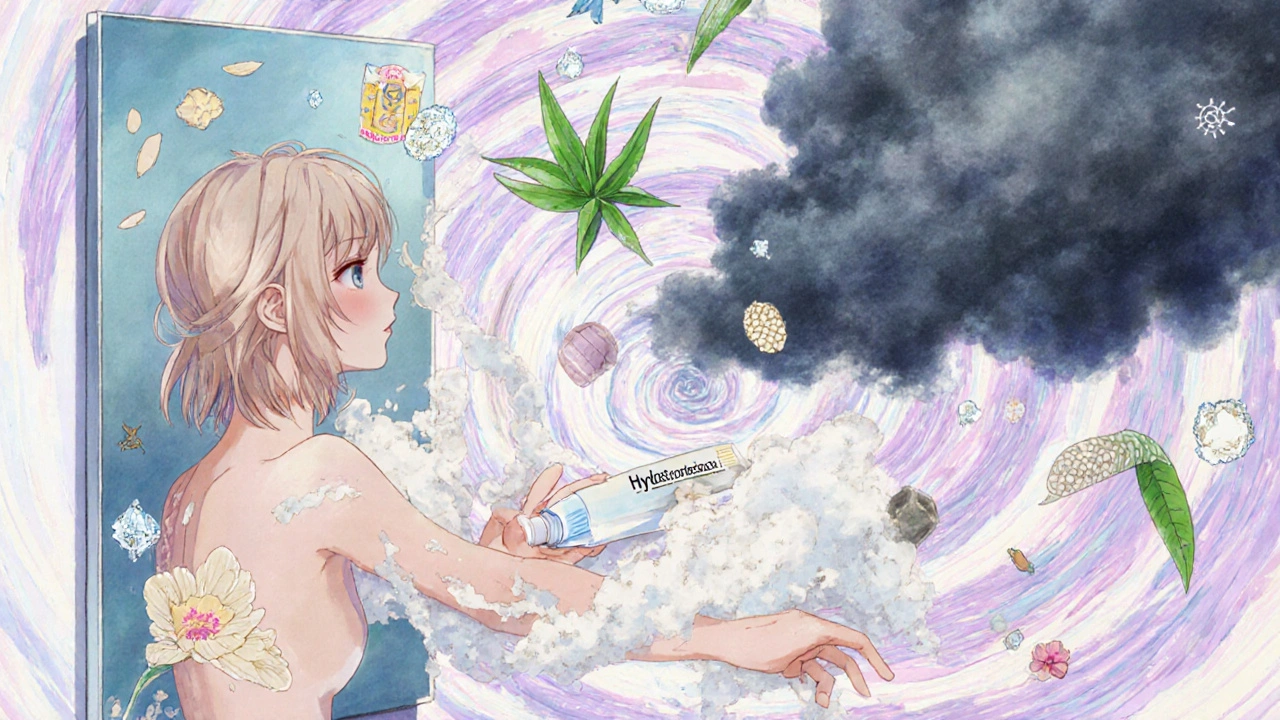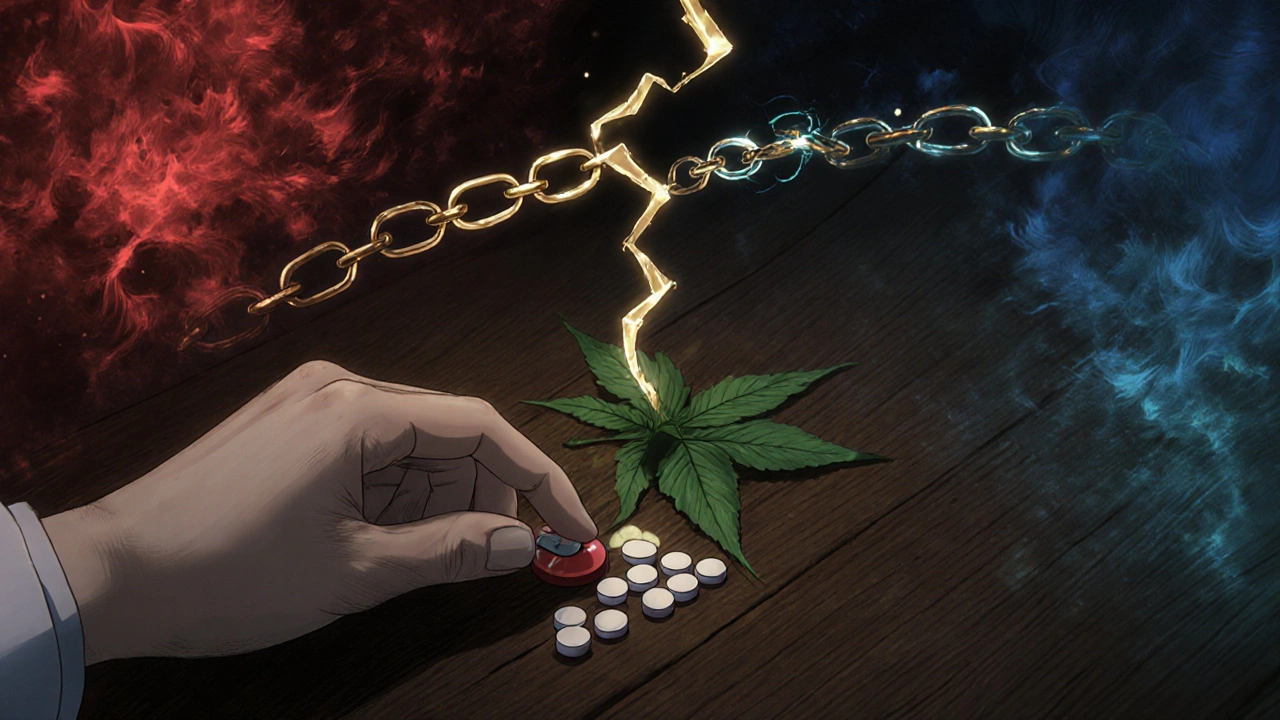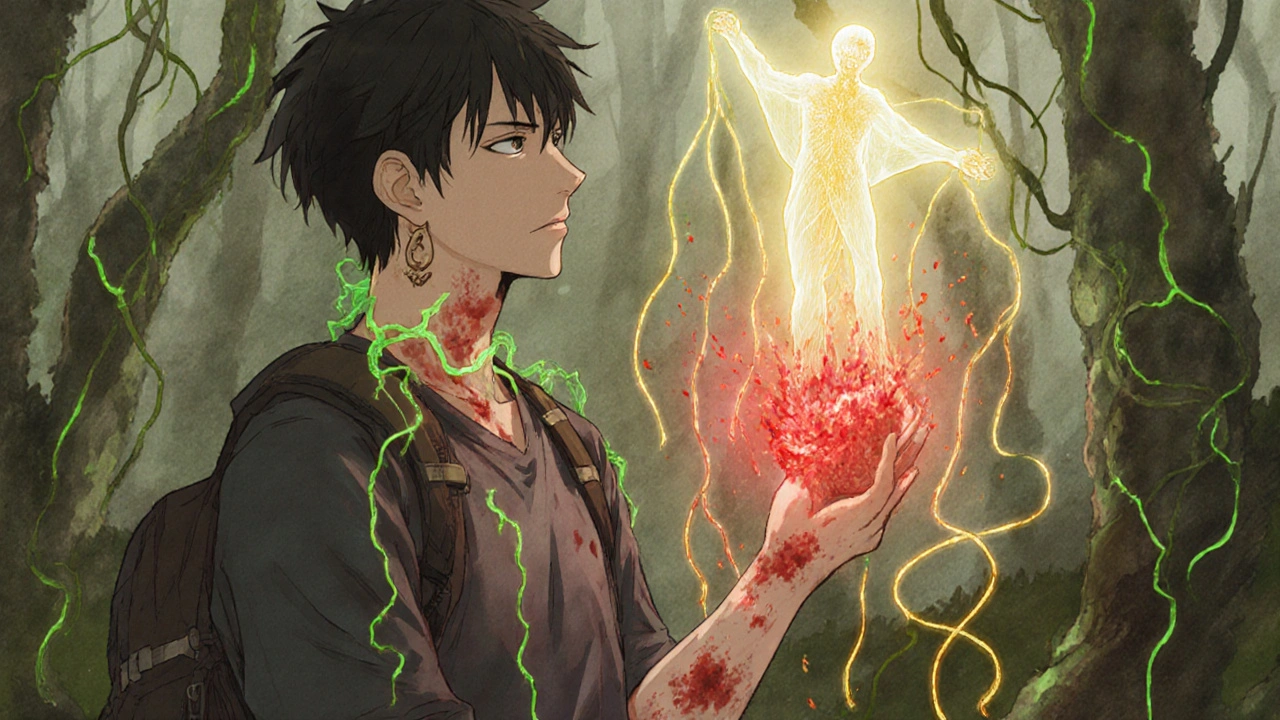People reach for dexamethasone when poison ivy turns their skin into a fiery, itchy nightmare. They’ve heard it’s a powerful steroid. They’ve seen friends use it. But is it really the right move-or just a risky shortcut?
Poison ivy doesn’t care how strong your immune system is. One brush against those oily leaves, and within 12 to 72 hours, your skin starts burning, swelling, and blistering. The rash isn’t contagious, but it’s relentless. And over-the-counter creams? Calamine lotion, hydrocortisone, antihistamines-they help a little. But when the rash spreads across your arms, neck, or face, you start wondering: dexamethasone could fix this fast, right?
What Is Dexamethasone, Really?
Dexamethasone is a synthetic corticosteroid. It’s not some herbal extract or natural cure. It’s a lab-made drug that mimics cortisol, your body’s natural stress hormone. Doctors use it for serious inflammation: asthma attacks, severe allergies, autoimmune diseases, even brain swelling from tumors.
It’s available as pills, injections, eye drops, and topical creams. The oral and injectable forms are prescription-only. The cream version? Sometimes available over the counter in low doses, but the strong stuff? You need a doctor’s signature.
For poison ivy, dexamethasone works by shutting down your immune system’s overreaction. The rash isn’t an infection-it’s your body attacking its own skin cells because of urushiol, the oil in poison ivy. Dexamethasone steps in and says: ‘Enough. Calm down.’
Why People Think It’s a ‘Natural Remedy’
There’s a dangerous myth floating around: ‘If it’s a steroid, it’s just like a natural cure.’ Some blogs call dexamethasone a ‘natural solution’ because cortisol is naturally produced. That’s misleading.
Natural remedies for poison ivy? Oatmeal baths, aloe vera, cold compresses, jewelweed paste. These soothe. They don’t stop inflammation at the cellular level. Dexamethasone does. And that’s the problem-it’s not gentle. It’s surgical.
People confuse ‘strong’ with ‘natural.’ They see a cream labeled ‘anti-inflammatory’ and assume it’s safe like tea tree oil. But dexamethasone isn’t tea tree oil. It’s a potent drug with side effects that can linger long after the rash is gone.
When Dexamethasone Might Actually Help
Not every poison ivy case needs steroids. Mild rashes? Stick with OTC hydrocortisone and cool showers. But if your rash covers more than 20% of your body, spreads to your face or genitals, or doesn’t improve after a week, you’re in the zone where dexamethasone becomes a medical option.
Doctors usually prescribe oral dexamethasone in a tapering dose: 6 mg per day for 5 days, then cut in half every few days. This avoids rebound inflammation. Topical dexamethasone cream (0.05% or higher) might be used for localized flare-ups, but only for short bursts-no more than 7-10 days.
Real-world example: A 34-year-old hiker in Victoria got covered in poison ivy after clearing brush. Within three days, blisters formed on her arms, chest, and neck. Hydrocortisone did nothing. Her doctor prescribed a 5-day dexamethasone taper. The itching stopped by day two. The blisters dried up by day five. No side effects. That’s the ideal scenario.
But here’s what most people don’t realize: dexamethasone doesn’t cure poison ivy. It just suppresses the reaction. The virus-like oil is still on your skin. You still need to wash everything-clothes, tools, pets, even your dog’s fur.

The Hidden Risks
Using dexamethasone without medical supervision is like using a chainsaw to trim your hedge. It works-but one slip, and you’re in trouble.
Short-term use (under two weeks) can still cause:
- Increased blood sugar (dangerous for diabetics)
- Mood swings, anxiety, or insomnia
- Fluid retention and swelling
- Thinning skin, easy bruising, or stretch marks (especially with topical use)
Long-term or repeated use? That’s where things get serious. Suppressed adrenal glands. Cataracts. Osteoporosis. Even a rare condition called adrenal crisis-where your body stops making cortisol altogether and you can go into shock.
And here’s the kicker: if you stop dexamethasone too fast, your rash can come back worse. That’s called rebound inflammation. You think you’re cured, then the redness explodes again. That’s why tapering isn’t optional-it’s mandatory.
What Works Better Than Dexamethasone for Most People
For 90% of poison ivy cases, you don’t need steroids at all.
Step one: Wash the area with cool water and dish soap (like Dawn) within 10 minutes of exposure. Urushiol oil is sticky. It doesn’t wash off easily. Soap cuts through it.
Step two: Use over-the-counter 1% hydrocortisone cream. Apply it three times a day for up to 7 days. It’s mild, safe, and effective for mild to moderate rashes.
Step three: Take oral antihistamines like cetirizine (Zyrtec) or loratadine (Claritin). They won’t stop the rash, but they reduce itching enough to help you sleep.
Step four: Soak in a colloidal oatmeal bath. Or apply a paste of baking soda and water. Both are backed by dermatology studies and have zero side effects.
Step five: Keep the area dry and cool. Wear loose cotton clothes. Don’t scratch. If you break the skin, you risk infection. Use an antibiotic ointment if you see pus or red streaks.
These steps work. They’re cheap. They’re safe. And they don’t mess with your hormones.

When to See a Doctor
You don’t need to panic every time you get a rash. But if any of these happen, call your doctor:
- Rash covers more than 25% of your body
- Swelling around your eyes, mouth, or genitals
- Fever over 38°C (100.4°F)
- Pus, yellow crusts, or spreading redness (signs of infection)
- No improvement after 10 days
These aren’t ‘wait-and-see’ situations. They’re red flags. A doctor might prescribe a short course of oral steroids-maybe dexamethasone-but only after checking for infection and ruling out other causes.
The Bottom Line
Dexamethasone isn’t a natural remedy. It’s a powerful medicine. And for poison ivy, it’s rarely the first-or even the second-choice.
Most people heal just fine with soap, oatmeal, and hydrocortisone. Dexamethasone is for the rare cases where the rash is out of control. Even then, it’s a short-term tool, not a cure.
Don’t grab someone else’s prescription. Don’t order it online. Don’t assume ‘stronger’ means ‘better.’ Poison ivy is annoying, but it’s rarely dangerous. Let your body heal. Use the right tools. And save dexamethasone for the emergencies it was designed for.
Can I use dexamethasone cream for poison ivy without a prescription?
Some low-strength dexamethasone creams (0.05%) are available over the counter, but they’re rarely recommended for poison ivy. Most pharmacists will steer you toward hydrocortisone instead. Stronger versions require a prescription. Even if you can buy it, using it without medical advice increases your risk of side effects like skin thinning or rebound rashes.
How long does it take for dexamethasone to work on poison ivy?
Oral dexamethasone usually starts reducing itching and swelling within 24 to 48 hours. Topical creams may take 48 to 72 hours. But remember: it doesn’t remove the urushiol oil. It only calms your immune system’s reaction. That’s why washing the skin immediately after exposure is still the most important step.
Is dexamethasone better than hydrocortisone for poison ivy?
Dexamethasone is about 25 times stronger than hydrocortisone. But for most poison ivy rashes, hydrocortisone is enough-and far safer. Dexamethasone is reserved for severe, widespread cases that don’t respond to milder treatments. Using it unnecessarily increases your risk of side effects without adding real benefit.
Can dexamethasone cause poison ivy to spread?
No, dexamethasone doesn’t cause the rash to spread. But if you stop taking it too quickly, your immune system can overreact again, making the rash appear worse. This is called rebound inflammation. It’s not the poison ivy spreading-it’s your body reacting to the sudden drop in steroids. That’s why doctors always prescribe a tapering schedule.
What should I do if I accidentally take too much dexamethasone?
If you take more than prescribed, contact your doctor or poison control immediately. Signs of overdose include severe mood changes, high blood pressure, rapid heartbeat, or swelling in your hands and feet. Don’t wait for symptoms. Even one extra pill can be risky if you have diabetes, high blood pressure, or a history of mental health conditions.


Just washed my jeans with Dawn after touching poison ivy and it saved me
Don't overthink it, soap and water works
i used hydrocortisone for 3 days and it was fine
no need to go nuclear with steroids unless you're literally covered in blisters 😅
Okay but let’s be real - I once used dexamethasone after my entire arm turned into a red, oozing swamp and I swear to god it was like a miracle
But then I stopped it too fast and it came back worse - like, twice as angry
My doctor made me taper it down over 10 days and honestly? That’s the only way it works
People think steroids are magic, but they’re more like a finely tuned engine - mess with the timing and everything blows up
I’ve seen friends just pop pills they found online and then show up at the ER with swollen faces and insomnia
It’s not about being scared of meds - it’s about respecting them
My grandma used oatmeal baths and said it was ‘the old way’ but I told her, ‘Grandma, if I don’t take this, I can’t work for a week’
There’s a time and place for both - simple remedies for mild cases, steroids for when your skin is staging a rebellion
And please, for the love of all that is holy, wash your dog’s fur if they roll in poison ivy - I learned that the hard way
My husky got it, I petted him, and now I had it on my neck too - soap doesn’t lie
Don’t let the internet convince you that ‘natural’ means safer - sometimes natural just means slower
And slow is fine when you’re not in agony
But if you’re crying because you can’t sleep because your skin is on fire - then yeah, call your doctor
Steroids aren’t evil, they’re just not for every rash
why do people treat poison ivy like it's a spiritual awakening? just wash it off and move on 🤷♂️
Topical dexamethasone 0.05% is fine for small patches. No taper needed. But avoid face and genitals. Hydrocortisone 1% is better first choice.
Oral steroid only for >20% body surface. Always taper.
why do Americans always think they need a pill for everything
we had poison ivy in my village in the 80s and we used mud and cold water
no doctor needed
you people are weak
the real tragedy is not the rash but the modern obsession with comfort
you want to feel better instantly so you reach for a chemical crutch
but life isn't meant to be painless
poison ivy is nature's way of reminding you you're not the center of the universe
your skin burns because you dared to touch the wild
and that's beautiful in its own way
but no one wants to sit with discomfort anymore
they just want to numb it
I love how this post breaks it down so clearly
I used to panic every time I got poison ivy until I learned the soap + oatmeal method
It takes a few days but you don’t risk side effects
Also - washing your tools and shoes? Game changer. I didn’t realize my gardening gloves were still oily for weeks
My cousin took dexamethasone for poison ivy and got severe anxiety and couldn’t sleep for a week
She thought it was ‘just a steroid’ but it hit her like a truck
Doctors don’t warn you enough about the mental side effects
It’s not just physical - your mind goes haywire too
Stick to the basics unless you’re literally in the ER
Just want to say thank you for writing this - I’ve been trying to convince my friends not to use random steroid creams from the internet
So many people think ‘if it’s in a tube, it’s safe’
But your body isn’t a lab experiment
Hydrocortisone + cool showers + patience = real healing
And if you’re still struggling after 10 days? Go see a doc - don’t guess
You’re not weak for needing help - you’re smart for knowing when to ask
Thank you for the thorough and balanced perspective. This is exactly the kind of medical clarity that is too often lost in online misinformation.
It is important to distinguish between symptom suppression and true resolution.
Patients must be educated on the risks of unsupervised corticosteroid use, particularly when self-diagnosing.
The emphasis on washing contaminated items cannot be overstated - it is the most effective preventive measure.
Additionally, the point about rebound inflammation is critical and frequently misunderstood.
Physicians should routinely reinforce tapering protocols when prescribing systemic steroids.
For the vast majority of cases, conservative management remains the gold standard.
Appreciate the evidence-based approach and clear language used throughout.